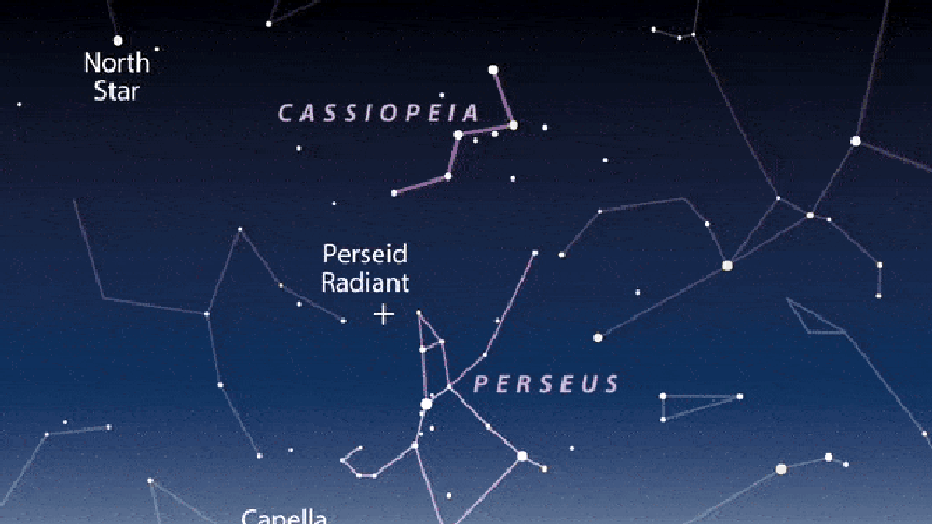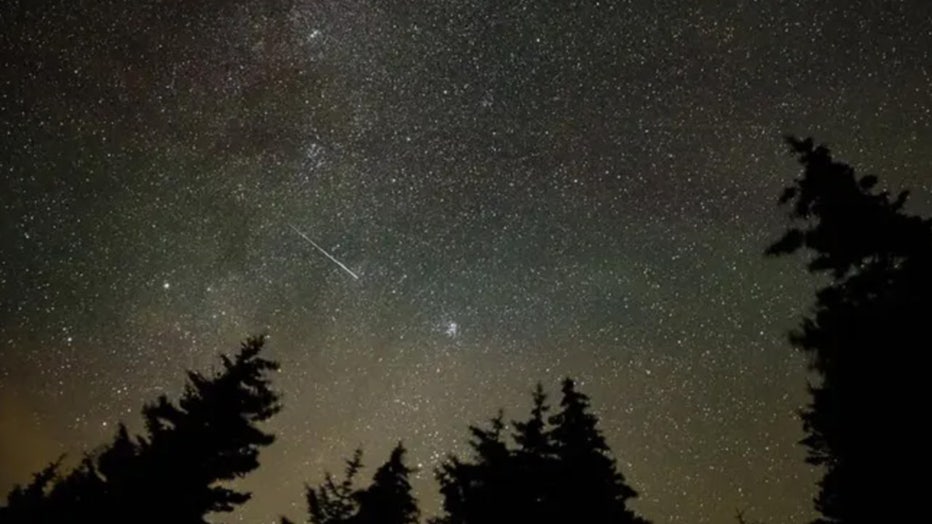Orionid meteor shower peaks this weekend: When and where to look up
The Orionid meteor shower puts on a spectacular light show every fall and is thought to be one of the most beautiful showers of the year, according to NASA. The meteros are known for their brightness and speed.
The Orionids occur when the Earth moves through the trail of leftover ice and rocky dust from Halley's Comet. According to NASA, this space debris interacts with our atmosphere, producing bright streaks in the night sky.
While the meteor shower has been active since Sept. 26 and will continue through Nov. 22, it will peak during the pre-dawn hours of Sunday, Oct. 20 and Monday, Oct. 21.

This simulation by skyandtelescope.org shows how to find the radiant and meteors. (Sky and Telescope / FOX Weather)
Skygazers in both the Northern and Southern Hemispheres will be able to see the Orionids, weather permitting.
For the best view, NASA said those in the Northern Hemisphere should lie flat on their backs under a clear night sky with their feet facing southeast. People in the Southern Hemisphere should do the same, but have their feet face the northeast.
After spending less than 30 minutes in the dark, your eyes will adapt and the meteors will become visible, according to NASA.

Perseid meteor shower on Wednesday, Aug. 11, 2021, in Spruce Knob, West Virginia. (NASA / NASA)
They noted that during the peak, the waning gibbous moon would be in the sky and might prevent a clear view of the shower, Earth Sky said. They recommended blocking the moon from where you are viewing the meteor shower.
This method also applies to manmade lights. Bill Cooke, who leads NASA’s Meteroid Environment Office at the Marshall Space Flight Center in Huntsville, Alabama, recommends finding a spot away from city and street lights.

